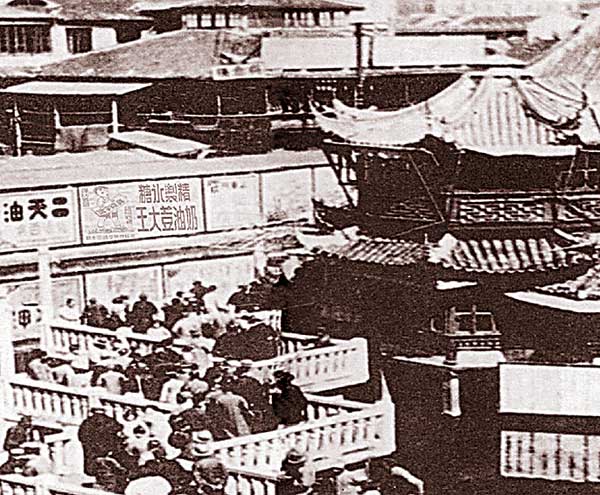Shanghai's history of the spiced beans
 |
|
Taste from heaven: Town God's Temple in 1950s. Photo provided to Shanghai Star |
Expansion
The store expanded into a specialized workshop in 1941, and upgraded its cookers from metal pots to copper pots, which enhanced the beans in both quality and appearance. Sales of the beans surged.
Guo started to deliver the beans to parks, theaters, stations, wharves and trains, which made the spiced beans even more famous.
Guo's store was restructured in a nationalization campaign after 1949. The expanded business raised the brand's daily output to 3,000 kilograms, but the high production still struggled to meet the demand. So the store set a quota of 1 kilogram per person at peak times.
Long lines outside the store became a familiar sight, and during the 1960s and 1970s, the beans became a souvenir that foreigners and celebrities would buy when they visited the city.
Production of the spiced beans grew three fold to 15,000 kilograms after it merged with a seeds production company in the 1980s.
Using high quality beans from Yuyao of Zhejiang province, the spiced beans are cooked in stainless steam pots with liquid spice. Only flawless white-shelled beans were used.
In 1997, the mascot of Shanghai International Tourism Festival, called "Doudou", derived its image from the spiced beans.
In 2009, the spiced beans were named as intangible cultural heritage of Shanghai.
"The lowered output of quality beans in Zhejiang province forced our company to look for beans in Haimen of Jiangsu province, but the recipe was kept the same throughout the years," according to Xie Li, marketing manager from the Town God's Temple Food Co, the owner of the spiced bean company.
The company invested nearly 10 million yuan in building a factory in 2005. After the expansion, sales revenues of the spiced beans company reached 20 million yuan in 2014, with a profit of 4.64 million yuan.
















